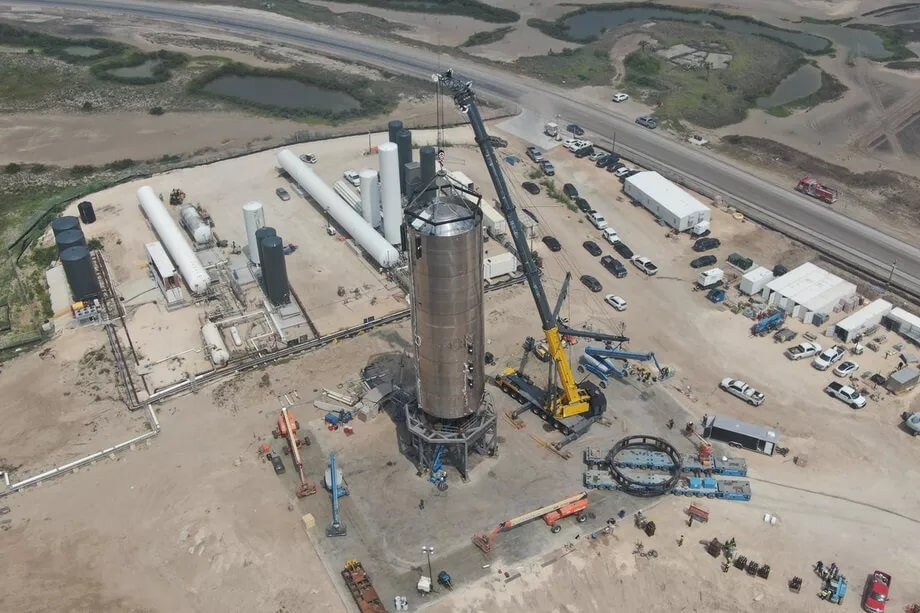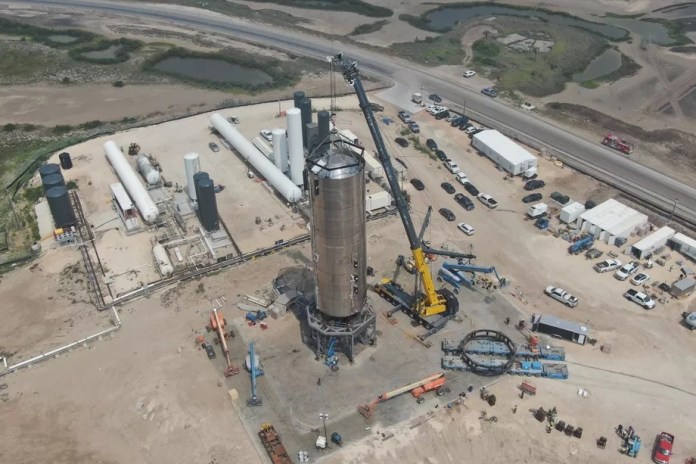
SN4, We Hardly Knew You. Another Starship Prototype Lost! (Image Credit: SNN)
Earlier today (Friday, May 29th), at 01:49 p.m. local time (02:49 p.m. EDT; 11:49 PDT), SpaceX Starship prototype (SN4) exploded on the company’s test pad near Boca Chica, Texas. The explosion occurred two minutes after ground crews commenced a static fire test of its Raptor engine. This test was intended to test the Raptor and the Starship design once more in preparation for a major milestone – a 150 m (500 ft) hop test – this summer.
Unfortunately, SpaceX is going to have to wait on that until its crews determine the cause of this latest accident. This is the fourth time a Starship prototype has been lost during testing at the SpaceX facility in Boca Chica. The three previous instances occurred between November of 2019 and April of 2020 when three prototypes (the Mk 1, SN1, and SN3) all suffered structural failures during the crucial cryogenic load test.
In these cases, the liquid oxygen or methane tanks (or both) suffered a blowout while being fully-pressurized with liquid nitrogen. These setbacks were followed by two successful tests with the SN4 prototype, which passed its cryogenic load test (Apr. 26th) and a short static fire test (May 3rd). Unfortunately, bad news struck again during a May 19th static fire test that resulted in a ruptured methane line that caused a fire.
In this latest accident, the SN4 prototype suffered a catastrophic about two minutes after the single Raptor engine was ignited. Based on what was captured by live webcams (and multiple observers), the fire appeared to start near the base of the rocket and then very suddenly engulfed the entire Starship, completely destroying it and sending debris in all directions around the test stand. Luckily, no injuries were reported.
In the meantime, SpaceX will be forced to delay the 150 m (500 ft) hop test of the Starship even further. According to filings made with the Federal Aviation Administration (FAA) in early May, SpaceX hoped to conduct this hop test last Thursday (May 21st). However, the fire that occurred just two days prior led to the decision to conduct another static fire test before making the attempt.
This past Thursday, SpaceX also received its long-awaited Commercial Space Transport License from the FAA to conduct suborbital test flights with the Starship. Getting this license means that the company has cleared the last bureaucratic hurdle before it can begin sending its prototypes to altitudes of 100 km (62 mi) above sea level or higher.
Before that can happen, though, SpaceX needs to conduct a hop test with the Starship. Back in August of 2019, the Starhopper single-engine prototype achieved this altitude during what was an untethered test. Had today’s static fire test gone as planned, it is possible SpaceX would attempt the hop test as early this weekend – as indicated by road closures announced for May 28th, 29th, and June 1st around Boca Chica.
Once realized, the Starship and Super-Heavy launch vehicle will conduct regular launches, sending payloads and crews to orbit and the ISS. Musk also intends to use the spacecraft to send cargo and crews to the Moon in support of Project Artemis and NASA’s long-term plan to establish a program of “sustainable lunar exploration.” Lastly, the Starship is central of Musk’s vision about colonizing Mars.
As always with spaceflight, timetables are subject to delay. Tests are necessary to get all the bugs out in advance and when things go wrong, engineers and crews need time to make the necessary fixes. But as always, we soldier on because the payoffs of space exploration are so much greater than the costs or the setbacks!
Rest in peace, SN4! Like your predecessors, your sacrifice will light the way to a brighter future!
– Advertisement –









